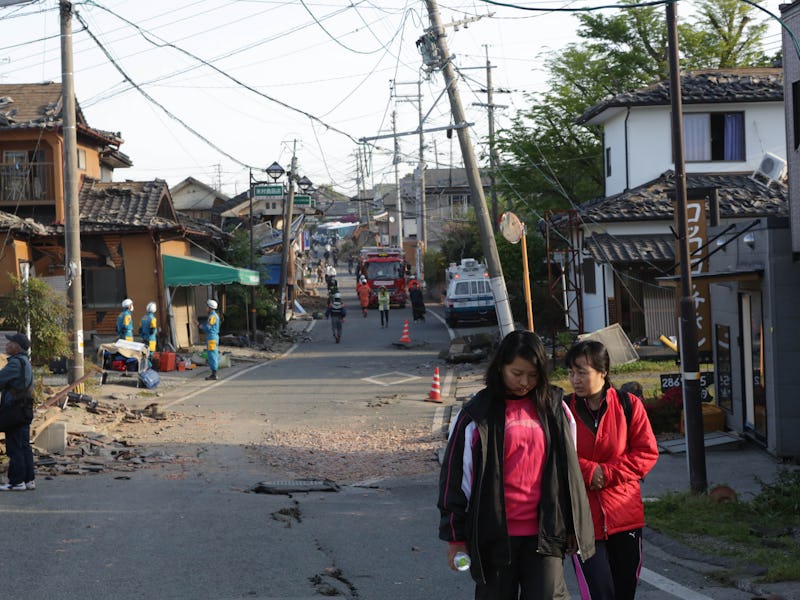Why Japan’s Earthquake Measurements Differ So Widely
The public shouldn't take magnitude readings so literally.

In the early hours of Saturday a large earthquake shook Japan, collapsing buildings, causing landslides, cracking roads, and killing at least 28 people and injuring hundreds more. The U.S. Geological Survey (USGS) measured it as a 7.0 magnitude quake, but the Japan Meteorological Agency measured it as 6.5 and media outlets are reporting a 7.3 magnitude intensity. So which of them is right?
Well, they’re all right.
When an earthquake happens, the public needs an all-encompassing number that puts this tremor in perspective to others from history, and while these numbers are important, they’re ultimately dumbed-down manmade scales of other real scientific measurements.
People want to think of these seismic measurements as a definitive number like the amount you owe on your bill, but it’s really more like a Pitchfork review — the decimal points are negligible and nit picky.
“The whole concept of magnitude reduces a complex and variable process — slip on fault patches with differing strength and frictional properties driven by non-uniformly stressed rocks — to a single number,” Paul Bodin, network manager for the Pacific Northwest Seismic Center, wrote.
The house is terriblly destructed by the earth quake on April 16, 2016 in Kumamoto, Japan. Following a 6.4 magnitude earthquake on April 14th, the Kumamoto prefecture was once again struck by a 7.3 magnitude earthquake, killing 9 people.
The infamous Richter Scale basically uses an instrument called a seismograph to measure the shockwaves created by an earthquake. Based on the readings of several of these devices and their distance from the quake, seismologists are able to triangulate the epicenter of the event (in this case near Kumamoto, Kyushu) and calculate its strength.
The point where the three circles intersect is the epicenter in a process called triangulation.
An earthquake is also measured in terms of slippage, which is how much one side of the fault moved against the other side in distance and area. But these can produce wildly different numbers into the hundreds of millions, which isn’t a very helpful way to categorize the importance of an event.
It’s much easier to classify this cluster of recent Asian seismic events into broader categories and it’s far more practical to do so. Just don’t get too bogged down in exact number, instead look at the real damage on the ground and the people affected by this tragedy — ultimately that’s what matters.
People receive relief supplies at the evacuation center a day after the 2016 Kumamoto Earthquake at the Mashiki Town Hall on April 15, 2016 in Mashiki, Kumamoto, Japan. As of April 15 morning, at least nine people died in the powerful earthquake with a preliminary magnitude of 6.4 that struck Kumamoto Prefecture on April 14, 2016.